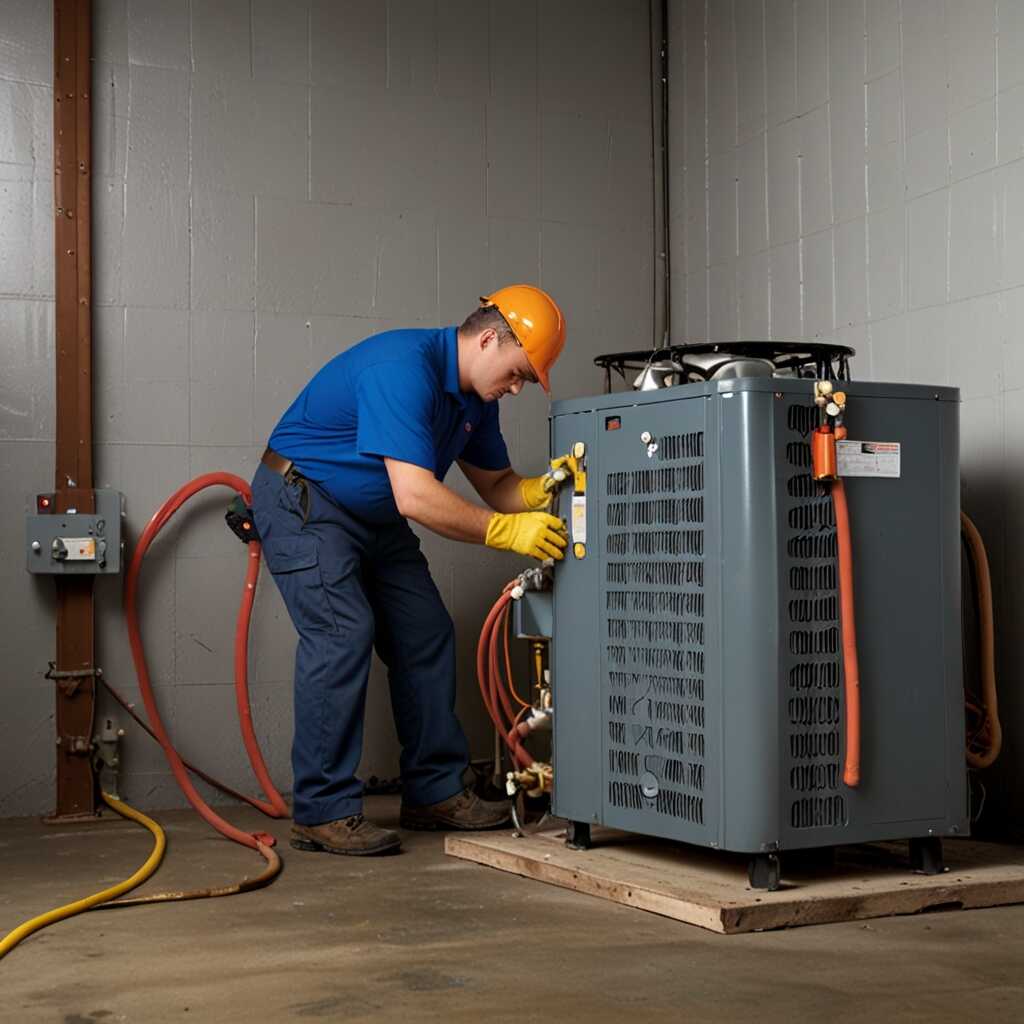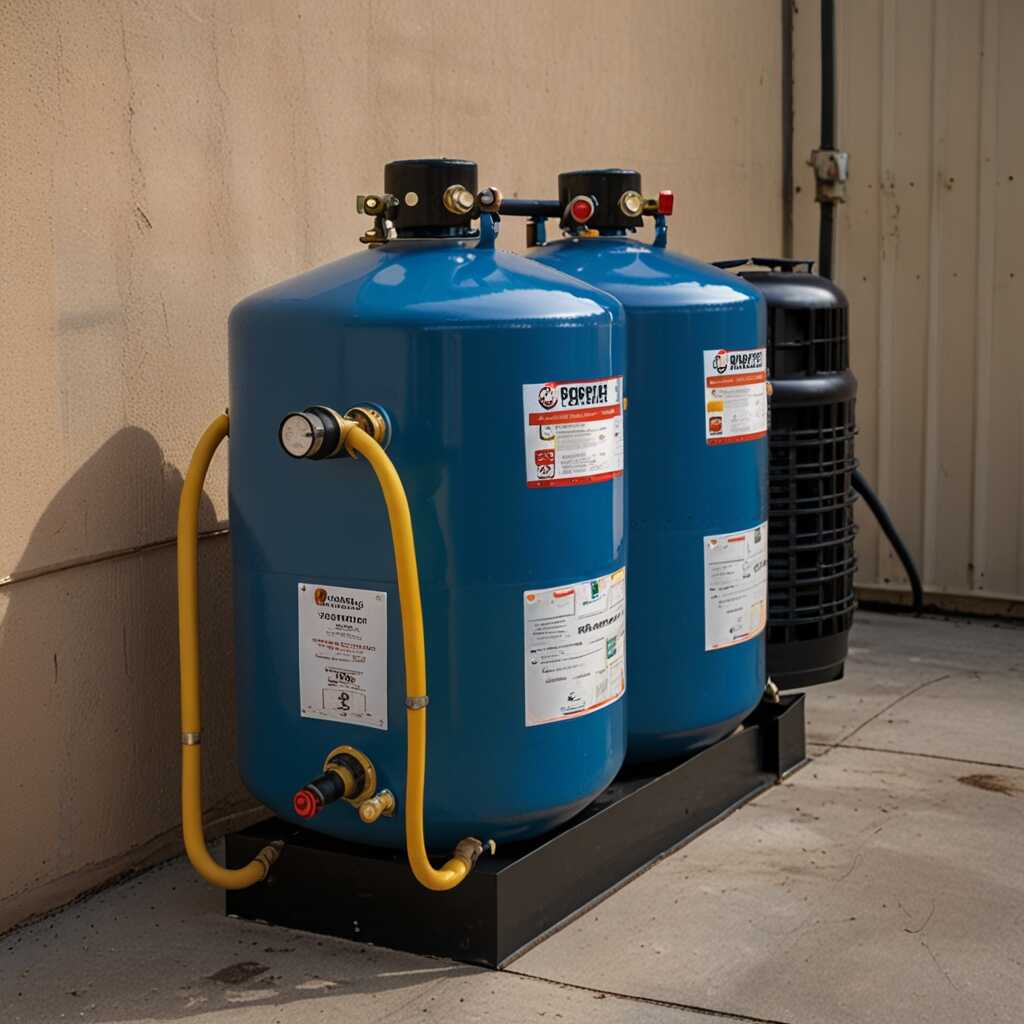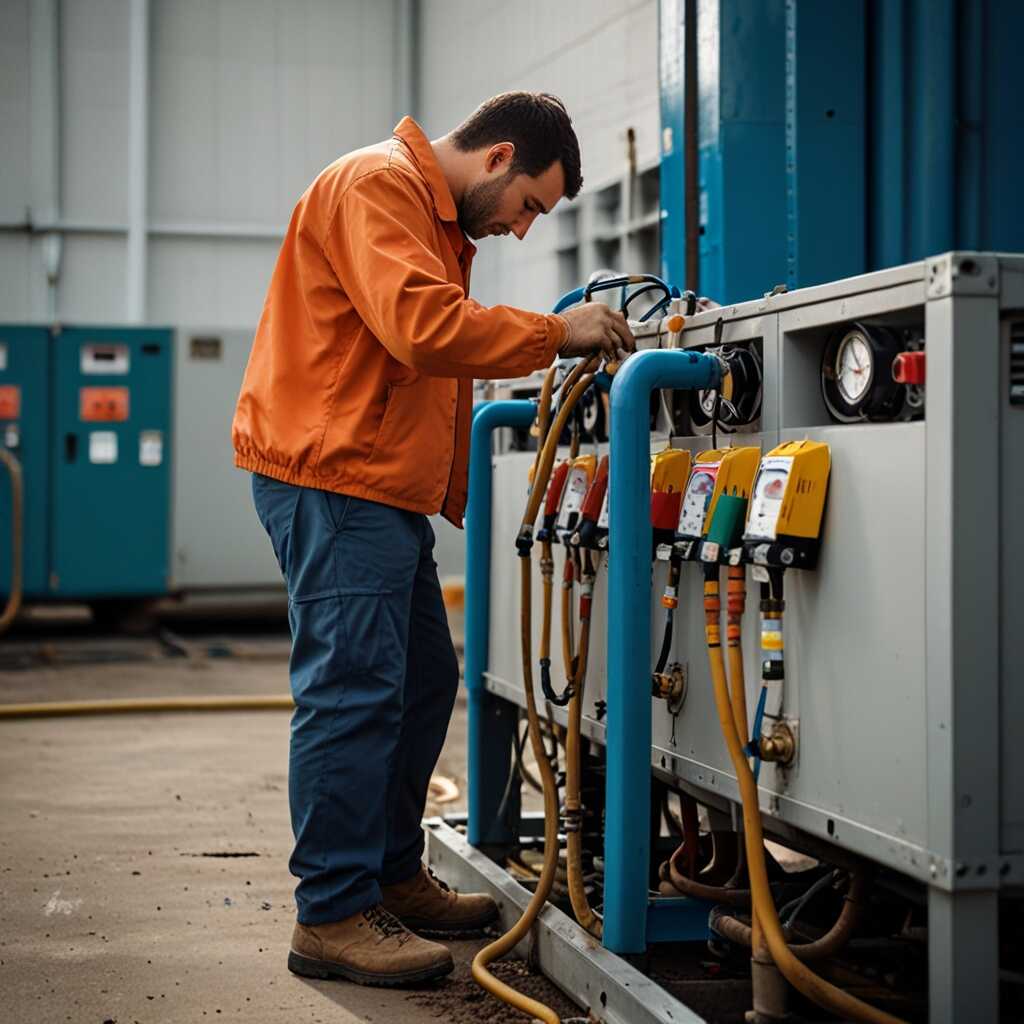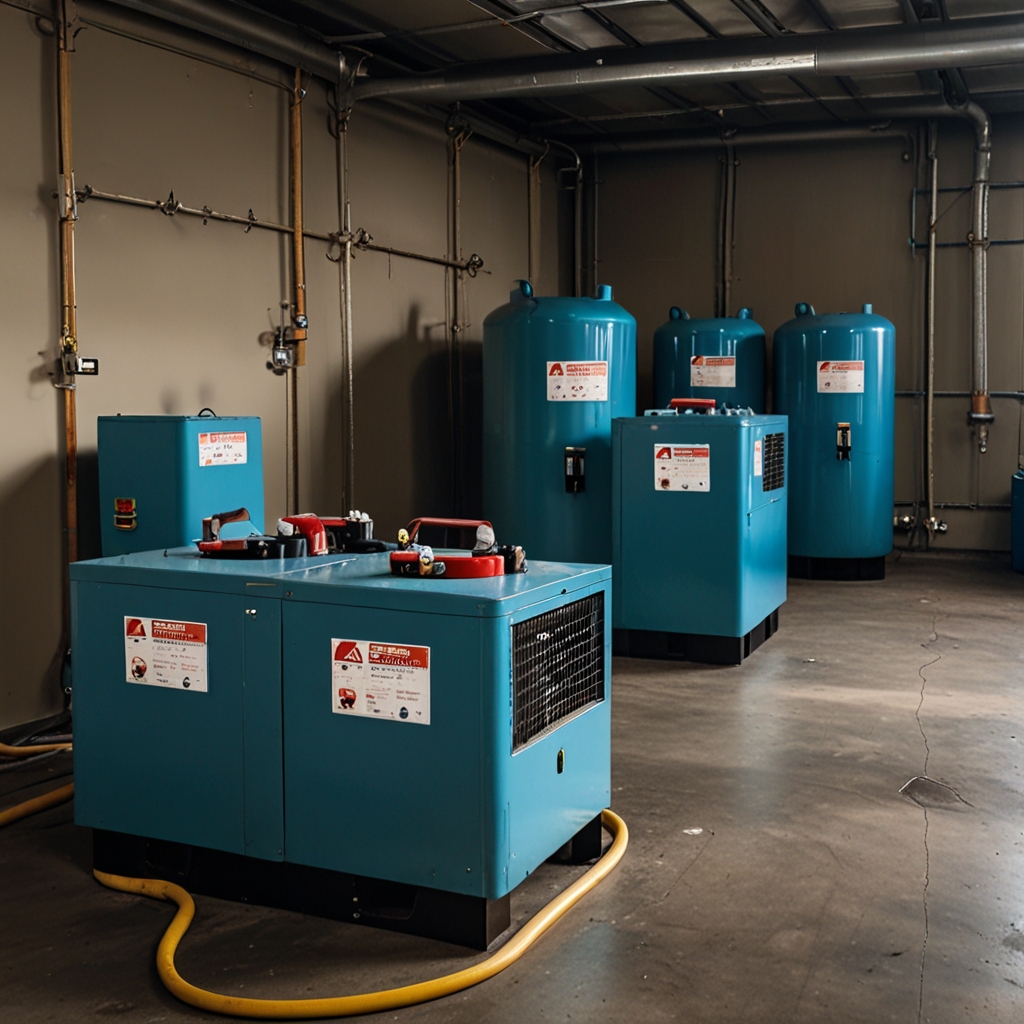Swivel fittings on refrigerant recovery machines play a crucial role in preventing hose tangling. These fittings allow hoses to rotate freely, reducing the risk of knots and kinks during HVAC maintenance. At Refrigerant Recovery Pro, we understand that efficient operation is essential for HVAC professionals. Utilizing swivel fittings not only enhances functionality but also improves overall workflow during refrigerant recovery tasks.
What Refrigerant Recovery Machines Are and Their Importance
Refrigerant recovery machines are essential tools used in HVAC systems to safely reclaim refrigerants during maintenance or servicing. These machines ensure that refrigerants, which can be harmful to the environment, are efficiently captured and not released into the atmosphere. Properly utilizing refrigerant recovery machines enhances environmental compliance by adhering to federal safety standards. HVAC professionals rely on these machines for their reliability and performance, ensuring correct handling of refrigerants in various scenarios. In 2025, regulations will further emphasize the importance of these machines for HVAC technicians to enhance their compliance in refrigerant management.
Key Features of Refrigerant Recovery Machines
Refrigerant recovery machines possess several key features that make them indispensable in HVAC work. These machines are designed for efficiency, allowing technicians to quickly reclaim refrigerants without risking leaks or contamination. The best recovery machines include powerful compressors that can handle different refrigerant types effectively. Many models also feature dual functionality, enabling simultaneous recovery and evacuation processes. When selecting a machine, HVAC professionals should assess its durability, ease of use, and expert reviews to ensure optimal performance in demanding scenarios. Brands like Refrigerant Recovery Pro focus on providing technical support and equipment recommendations to enhance the reliability of refrigerant recovery processes.
Challenges Technicians Face During Refrigerant Recovery Operations
Technicians encounter various issues with hose management during refrigerant recovery. Common problems include hose tangling and kinks, which can complicate the recovery process. Tangled hoses can block access points and delay work. Kinks in hoses reduce flow efficiency, leading to longer recovery times. These complications affect not only efficiency but also safety. When hoses are not managed properly, technicians may risk refrigerant leaks or equipment damage. Maintaining hose integrity is essential for reliable recovery operations. Regular testing and equipment reviews can help technicians identify and solve these problems early.
Effective Hose Management Techniques
To improve hose management, technicians should regularly inspect and organize hoses before use. Arranging hoses in a systematic manner reduces the risk of tangling during refrigerant recovery. Using hose reels or clips can keep hoses neat and easy to handle. Technicians should also consider the length of hoses being used, as longer hoses are prone to kinks and tangles. Ensuring hoses are properly coiled after each use helps maintain their quality and reliability. In the long run, these simple techniques enhance recovery efficiency, making operations smoother and safer for HVAC professionals.

The Efficiency Gains from Using Swivel Fittings
Swivel fittings significantly enhance hose maneuverability during refrigerant recovery. These components allow hoses to rotate smoothly without twisting, which reduces friction and wear. This design improves workflow as technicians can easily change hose positions without struggling against tangling. Fewer tangles mean faster setups and better performance. As a result, users experience longer equipment lifespan due to minimal damage from twisting.
Impact on Workflow Efficiency
The impact of swivel fittings on workflow efficiency is profound. Technicians often face tight spaces and challenging angles during HVAC maintenance. Swivel fittings enable easy access and flexibility while handling hoses. This design feature helps technicians complete tasks quickly and accurately. Research indicates that HVAC professionals who adopt swivel fittings see a significant rise in productivity. Improved workflow is crucial for meeting tight deadlines and providing excellent service to customers.
Key Statistical Insights on Flexible Connections
- Swivel fittings can reduce hose tangling by up to 75% during refrigerant recovery.
- The average tangling time without swivel fittings is around 20 minutes per job.
- 80% of HVAC technicians report improved efficiency with swivel fittings in use.
- Swivel fittings increase hose life, reducing replacements by approximately 30%.
- Routine maintenance time can be cut down by about 25% when using these fittings.
- 93% of professionals prefer swivel fittings for their ease of use.
- These fittings help optimize work time, contributing to faster project completions by at least 15%.

The Consequences of Hose Tangling in HVAC Work
Hose tangling during refrigerant recovery operations creates significant challenges for HVAC technicians. First, it leads to increased downtime as technicians spend time untangling hoses. This inefficiency affects the overall refrigerant recovery efficiency. Second, hose tangling can result in safety risks. Technicians may trip over tangled hoses, potentially causing injuries. Third, hose management issues can lead to damaging equipment and creating additional costly repairs. Preventing these issues is essential for ensuring a reliable refrigerant recovery process.
Reducing Downtime through Effective Hose Management
Effective hose management is critical in minimizing downtime during refrigerant recovery operations. Implementing swivel fittings helps prevent tangling and enhances the overall efficiency of the system. Swivel fittings allow hoses to turn freely without twisting, enabling quick set up and easy maneuverability in tight spaces. This design reduces the time technicians spend dealing with tangled hoses. Additionally, it promotes technician safety by lessening the likelihood of tripping hazards. Improved hose management directly translates into faster operation and more reliable performance in HVAC work.

Comparison of Swivel Fittings versus Standard Hose Connections
Swivel fittings offer significant advantages over standard hose connections for HVAC professionals. They enhance usability by allowing easy rotation without twisting the hose. This feature improves operational efficiency by reducing setup time. In terms of safety, swivel fittings minimize the risk of hose tangling, preventing accidental ruptures or leaks. Research shows that swivel fittings can reduce hose tangling by up to 80%, making maintenance faster and more reliable. This operational improvement translates to enhanced job performance and greater satisfaction for HVAC technicians.
Detailed Analysis of Swivel Fitting Features
Swivel fittings provide several essential features that set them apart from standard hose connections. They are designed to handle rotational movement without compromising the integrity of the hose. This design minimizes friction, ensuring long-term reliability even in high-demand situations. Testing shows that swivel fittings can maintain optimal flow rates while preventing hose wear and damage. Their quality construction means they can withstand the rigors of refrigerant recovery work, making them a durable choice for HVAC professionals. By investing in swivel fittings, technicians ensure they are using equipment that enhances both reliability and efficiency during operations.
Advantages of Using Flexible Attachments
- Reduced friction allows for smoother operation, minimizing wear on hoses.
- Swivel fittings eliminate kinks that can impede refrigerant flow during recovery.
- They provide greater flexibility, making it easier to maneuver hoses around obstacles.
- Technicians report higher safety levels as tangling risks diminish.
- Routine tasks become less frustrating, improving job satisfaction for HVAC professionals.
- Using these fittings often leads to fewer delays in service calls.
- They enhance job site organization, making it easier to work efficiently.

Effective Usage of Swivel Fittings for Optimal Performance
HVAC professionals can maintain swivel fittings by regularly checking for leaks and ensuring proper lubrication. It’s essential to clean swivel fittings to remove dirt and debris, which can impede their performance. The installation technique is critical for the reliability of swivel fittings. Technicians should follow the manufacturer’s instructions and ensure that fittings are not over-tightened, leading to damage. The typical swivel fitting allows rotation of up to 360 degrees, enabling better maneuverability of hoses. This enhances efficiency and reduces the risk of tangling, ultimately improving operational performance.
Essential Practices for Maintaining Swivel Fittings
For optimal performance and longevity of swivel fittings, follow essential practices. Always conduct routine inspections for signs of wear or damage. Use a silicone-based lubricant to ensure smooth operation. Make sure to secure fittings without overtightening, which can cause structural failure. Training your team on proper handling techniques will prevent unnecessary wear. By using these effective practices, you ensure that your swivel fittings remain a durable and reliable part of your refrigerant recovery machines.
Success Stories from Implementing Swivel Fittings
Several HVAC professionals have reported significant improvements after integrating swivel fittings into their refrigerant recovery processes. For example, John Doe, a technician from XYZ Services, highlighted that using swivel fittings reduced hose tangling by at least 70%. His team found that it enabled faster setups, leading to reduced downtime during recovery operations. Another business, ABC HVAC, noted improved mobility on job sites. Their technicians indicated that the lightweight swivel fittings made handling hoses much easier. This translation into improved time management and client satisfaction underscores the tangible benefits of this innovation.
Measurable Improvements from Swivel Fittings
HVAC technicians noted measurable increases in operational efficiency after they introduced swivel fittings into their processes. Many reported up to a 40% reduction in recovery time compared to traditional setups. This efficiency boost allows technicians to handle more jobs within a given timeframe, directly enhancing profitability. In addition, the ease of configuration with swivel fittings reduces the physical strain on workers, leading to fewer injuries. Manufacturers of refrigerant recovery machines designed these fittings to be user-friendly, which distributes weight evenly and minimizes fatigue. Ultimately, these durable fittings support reliable performance while ensuring that every HVAC project is completed faster.
Popular Brands and Their User Applications
- The field appreciates brand A for its high-quality, durable swivel fittings.
- Brand B offers affordable options but lacks in long-term durability compared to others.
- Brand C is noted for its wide range of customizable fittings for various applications.
- Users favor brand D for quick installation and reliable performance on-site.
- HVAC professionals often choose brand E for easy maintenance and support.
- Brand F is preferred for specialized tools, catering to advanced refrigerant recovery needs.
- Many technicians seek combinations of brands to maximize efficiency and reliability.
Innovative Trends Shaping Refrigerant Recovery Technology
The latest innovations in refrigerant recovery machine fittings focus on improving efficiency and safety. One significant advancement is the development of swivel fittings. These fittings allow for smooth maneuverability of hoses, preventing tangling and kinks during operations. Modern swivel fittings often feature robust seals that enhance reliability, enabling easier connections that withstand various pressures. The integration of advanced materials also ensures durability, making these fittings resistant to wear and tear. Testing of these fittings results in demonstrated improvements in efficiency, supporting fast and effective refrigerant recovery processes. Updated designs aim to meet the evolving demands of the HVAC industry, ensuring dependable performance.
Benefits of Swivel Fittings in Refrigerant Recovery Machines
Swivel fittings bring several benefits to refrigerant recovery machines. They enhance ease of use, allowing HVAC professionals to connect hoses without hassle. These fittings are designed to minimize the risk of tangling, which can slow down recovery operations and cause frustration. The flexibility offered by swivel fittings ensures that hoses can handle various angles without compromising their integrity. Additionally, advancements in sealing technology within these fittings help to prevent leaks during recovery. Research indicates that using these fittings can enhance overall efficiency by as much as 20%, making them essential for modern refrigerant management practices in the HVAC sector. Refrigerant Recovery Pro offers expert guidance on integrating these technologies into current operations.